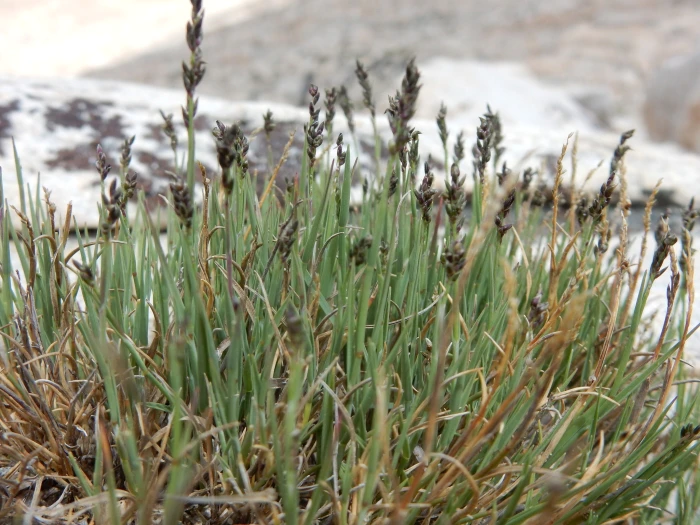Mat Muhly
(Muhlenbergia richardsonis)
Mat Muhly (Muhlenbergia richardsonis)
/
/

Matt Lavin
CC BY 4.0
Image By:
Matt Lavin
Recorded By:
Copyright:
CC BY 4.0
Copyright Notice:
Photo by: Matt Lavin | License Type: CC BY 4.0 | License URL: http://creativecommons.org/licenses/by/4.0/ | Rights Holder: Matt Lavin | Publisher: iNaturalist | Date Created: 2018-07-21T10:47:38-07:00 |

























Estimated Native Range
Climate Requirements for Wyandotte, Michigan
| This Plant | Your Site | Plant Suitability for Your Location | ||
|---|---|---|---|---|
| • Precipitation | 3" - 70" | 34" | Your precipitation may be too high for this plant. | Too high |
| • High Temp. | 59°F - 100°F | 83°F | Your summer temperatures are normal for this plant. | Excellent |
| • Low Temp. | -25°F - 47°F | 17°F | Your winter temperatures are normal for this plant | Excellent |
This plant may not grow well at your location - your precipitation is too high.
Summary
Muhlenbergia richardsonis, commonly referred to as mat muhly, is a rhizomatous perennial grass native to diverse habitats across North America, including alpine meadows, talus slopes, wetlands, and prairies. Its range extends from Canada and Alaska through the western contiguous United States to Baja California, Mexico. Mat muhly typically forms dense, knotted mats with stems up to 16 inches long and slender, blue-green leaves that are 2-3 inches in length. The plant produces narrow, cylindrical inflorescences with single-flowered spikelets that are less conspicuous than the foliage. It is adapted to a variety of soil types, from wet alkaline soils to dry desert conditions.
Mat muhly is valued for its ability to stabilize soil and for its low maintenance requirements, making it suitable for restoration projects and naturalized landscaping. It thrives in full sun to part shade and prefers well-drained soils, tolerating both dry and moist conditions. While not commonly used in ornamental horticulture, it can be an effective ground cover in appropriate settings. Mat muhly is also notable for its ecological role as the sole food plant for the leafhopper Flexamia huroni. Gardeners should be aware that in some environments, it may spread aggressively through its rhizomes.CC BY-SA 4.0
Mat muhly is valued for its ability to stabilize soil and for its low maintenance requirements, making it suitable for restoration projects and naturalized landscaping. It thrives in full sun to part shade and prefers well-drained soils, tolerating both dry and moist conditions. While not commonly used in ornamental horticulture, it can be an effective ground cover in appropriate settings. Mat muhly is also notable for its ecological role as the sole food plant for the leafhopper Flexamia huroni. Gardeners should be aware that in some environments, it may spread aggressively through its rhizomes.CC BY-SA 4.0
Plant Description
- Plant Type: Grass
- Height: 0.8-2 feet
- Width: 0.5-1.5 feet
- Growth Rate: Rapid
- Flower Color: N/A
- Flowering Season: Summer, Fall
- Leaf Retention: Deciduous, Semi-deciduous
Growth Requirements
- Sun: Full Sun, Part Shade
- Water: High
- Drainage: Medium, Slow
Common Uses
Drought Tolerant, Erosion Control, Low Maintenance
Natural Habitat
Native to alpine meadows, talus slopes, wetlands, and prairies across North America
Other Names
Common Names: Soft-Leaf Muhly, Richardson’s Muhly, Matted Muhly, Short-Leaved Muhly
Scientific Names: Muhlenbergia richardsonis, Muhlenbergia aspericaulis, Muhlenbergia brevifolia var. richardsonis, Muhlenbergia squarrosa, Sporobolus aspericaulis, Sporobolus depauperatus, Sporobolus richardsonii, Sporobolus richardsonis, Vilfa depauperata
GBIF Accepted Name: Muhlenbergia richardsonis